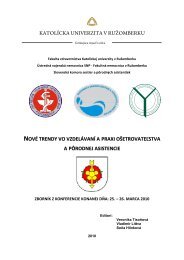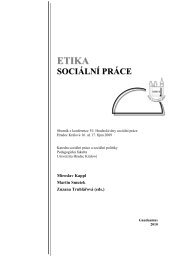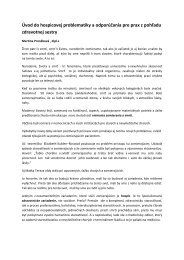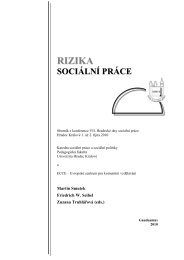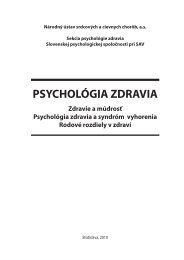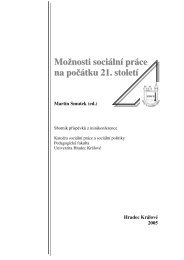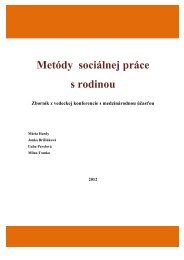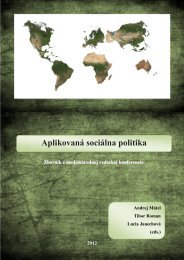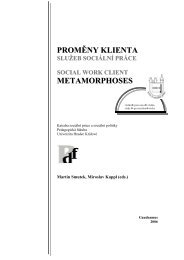Zmena klÃmy â možný dopad (nielen) na obyvateľstvo - Prohuman
Zmena klÃmy â možný dopad (nielen) na obyvateľstvo - Prohuman
Zmena klÃmy â možný dopad (nielen) na obyvateľstvo - Prohuman
You also want an ePaper? Increase the reach of your titles
YUMPU automatically turns print PDFs into web optimized ePapers that Google loves.
Africa, largely u<strong>na</strong>ffected by malaria, but with a high rate of HIV. While there are<br />
also some parts of Africa which may experience a lower rate of malaria due to<br />
CC in the main they also experience a lower rate of HIV, due to different norms,<br />
customs and behaviours.<br />
An important interaction exists between HIV and malaria, itself a leading cause<br />
of lost DALYs, ranked as having the fifth highest BOD among the infectious diseases,<br />
and responsible for about one third of the BOD of HIV. A harmful interaction<br />
between malaria and HIV was first reported in multigravid preg<strong>na</strong>nt women in<br />
the late 1980s. Since then, after initially conflicting studies, evidence has accumulated<br />
of a biologic and clinical interaction between HIV-1 infection in adults and<br />
children on malaria. In malaria-endemic SSA approximately 25 million women<br />
become preg<strong>na</strong>nt each year. The vast majority of these women will have survived<br />
earlier episodes of malaria, and thus have some immunity. However, during preg<strong>na</strong>ncy,<br />
this immunity wanes, thus enhancing the risk of infection with malarial<br />
parasites, including the most severe strain, Plasmodium falciparum. This interaction<br />
is bi-directio<strong>na</strong>l. That is to say, while HIV worsens malaria, untreated malaria<br />
infection can increase the HIV viral load. Children born to mothers co-infected<br />
with HIV and malaria are at a higher risk of placental malaria and adverse birth<br />
outcomes. Unfortu<strong>na</strong>tely, it is still uncertain if malaria infection increases the<br />
probability of mother to child transmission of HIV. Tanser et al. concluded that<br />
there is a potential increase of 16–28% in person-months of exposure to malaria<br />
in Africa by 2100, on the assumption that future climates fall within simulated<br />
ranges. They argue that this is also of concern because of social conditions and<br />
i<strong>na</strong>dequate health infrastructure are likely to facilitate this rise, compounded by<br />
deteriorating malaria control programmes and possible links between HIV and<br />
malaria.<br />
In summary, CC is likely to increase the burden of malaria in some parts of Africa,<br />
and this is likely to worsen the impact of HIV. However it is still unclear whether<br />
this will directly increase HIV transmission (i.e. from mothers with HIV and malaria<br />
to children). In those parts of SSA with a high prevalence of HIV the BOD of malaria<br />
will also be higher. If the CCs enough to e<strong>na</strong>ble malaria transmission in densely<br />
populated highland cities, which are currently mostly malaria free, then the total<br />
BOD will be more than from malaria alone, due to this interaction with HIV.<br />
It is well understood that that infection with some parasites and infectious<br />
agents other than malaria can also exacerbate or accelerate the progression of<br />
HIV infection. Some of these co-infections are also sensitive to CC. For example,<br />
leishmaniasis, a parasitic disease transmitted by the bite of sandflies, is an increasingly<br />
common cause of death in AIDS patients in parts of Asia, Europe and<br />
58





